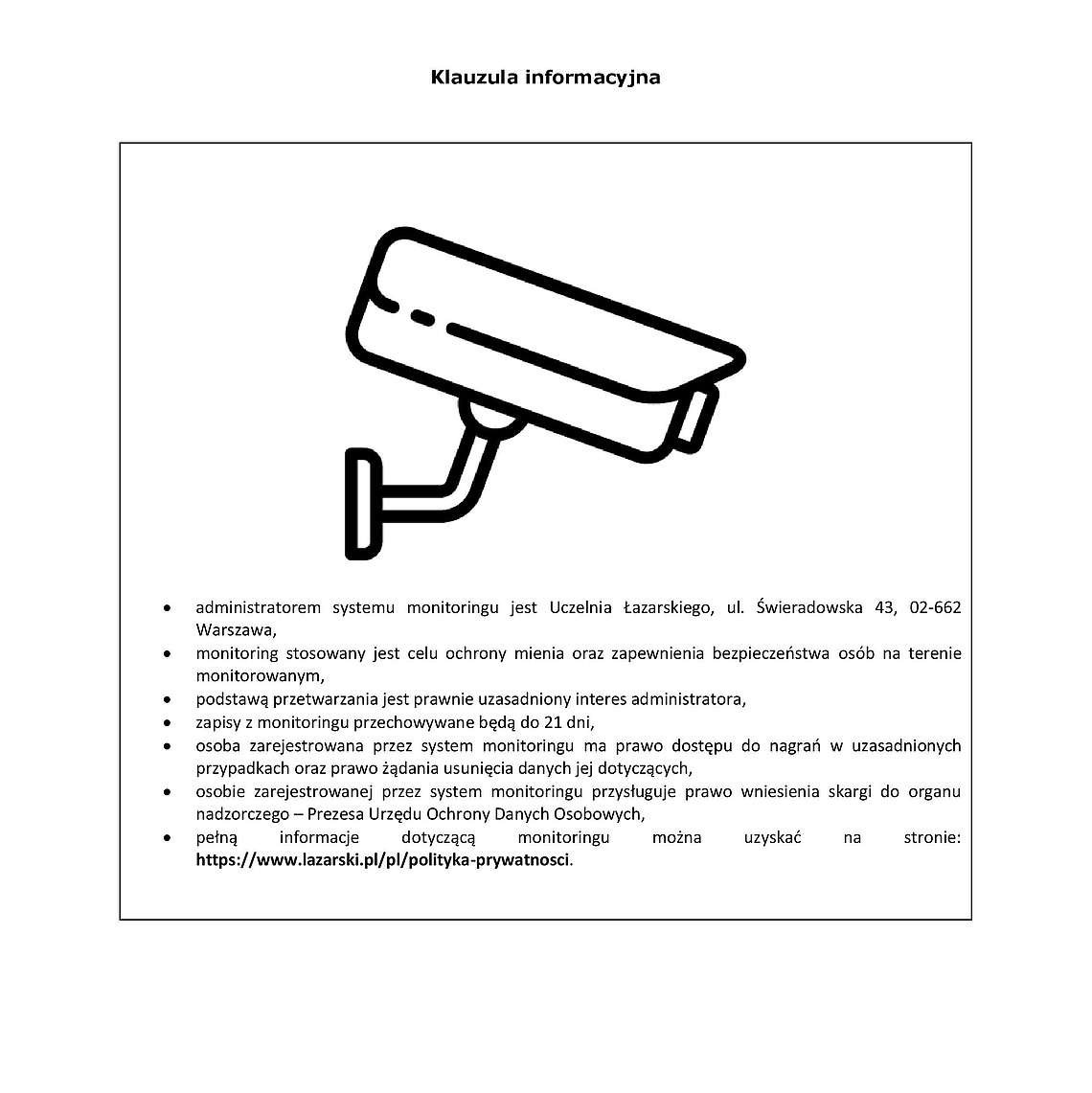- Video monitoring is introduced in order to protect the safety of persons and protect property located on the premises of Lazarski University.
- The basis for the introduction of monitoring is the legitimate interest of the Administrator in accordance with Regulation (EU) 2016/679 of the European Parliament and of the Council of April 27, 2016 on the protection of natural persons in relation to the processing of personal data and on the free flow of such data and repealing Directive 95/46/EC (RODO) and Article 22(2) of the Labor Code.
- The video surveillance system includes a set of cameras and recorders, as well as software to observe the records.
- The monitoring includes:
- the Lazarski University building at 43 Swieradowska Street, 02-662 Warsaw, sector A, D, E, F, the university courtyard and underground parking lots.
- Monitoring remains active 24 hours a day.
- Persons authorized to view the recorded image have authorizations granted by the Personal Data Administrator.
- Persons authorized to view the recorded image have authorizations granted by the Vice President for Operations. Operations - Administrator of Personal Data and authorizations granted by the property security agency to its employees (the so-called sub-processor), which has been entrusted with the operation of the monitoring.
- The devices recording the image are located in a secured room.The devices recording the image are located in a secured room.
- The recording of the monitoring may be reproduced with the consent and at the time set by the authorized person for the purposes specified in point 1.
- Recordings may be provided, upon written request, to authorized services or authorities in order to clarify the case in progress.
- The surveillance recordings may be made available to persons directly interested in the clarification of the incident with the anonymization of other recorded persons, the disclosure of which could lead to a violation of the rights and freedoms of persons.
- The surveillance recordings are stored for up to 21 days, unless the recorded image can or will be used as evidence in proceedings conducted by a competent court or other public authority. The Administrator of personal data shall be responsible for the storage and destruction of the materials after the expiration of the time limits stipulated by law.
- A person recorded by the monitoring system has the right to information about the existence of monitoring in a specific place, its scope, purpose, the right to access the recordings in justified cases, the right to request deletion of data concerning him/her, rectification, restriction of the processing of personal data, as well as the right to object.
- A person recorded by the monitoring system has the right to lodge a complaint to the supervisory authority - the President of the Office for Personal Data Protection.
- Information about the monitoring (graphic sign of the camera plus an information clause) is placed in a visible place on the gate of the University/entrance to the underground parking lot/inside the campus/entrance door to the University.
- The image recorded by the monitoring system does not constitute public information and is not subject to disclosure under the provisions of the Act on Access to Public Information.
- Only the image from the cameras is subject to registration, without sound recording.
- After the expiration of the period referred to in item. 12 - image recordings obtained as a result of monitoring are subject to destruction.
 .
.

